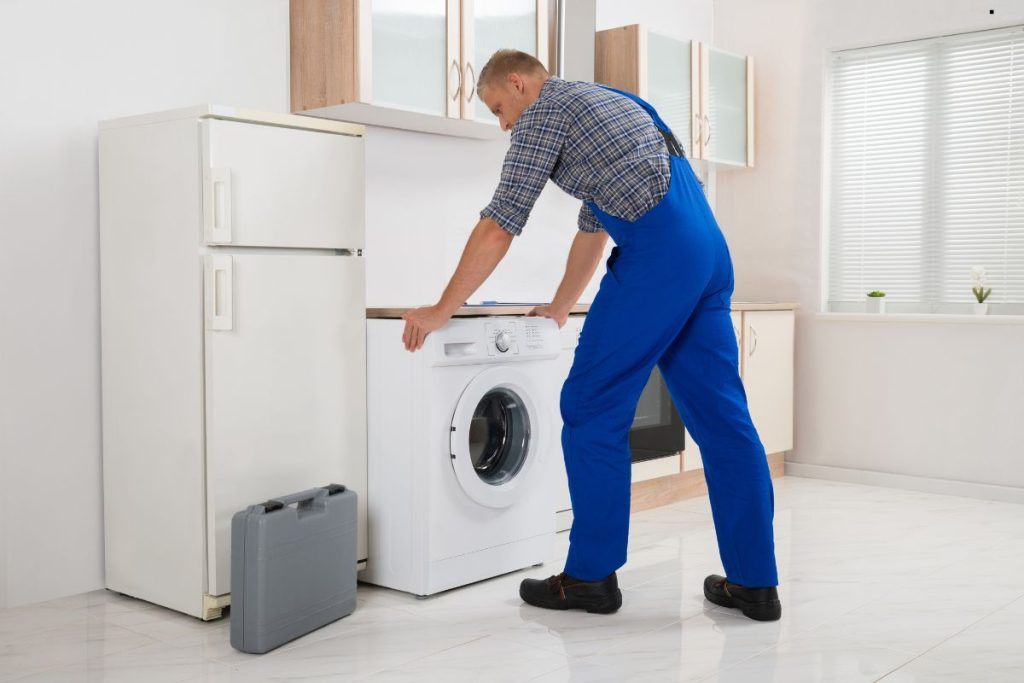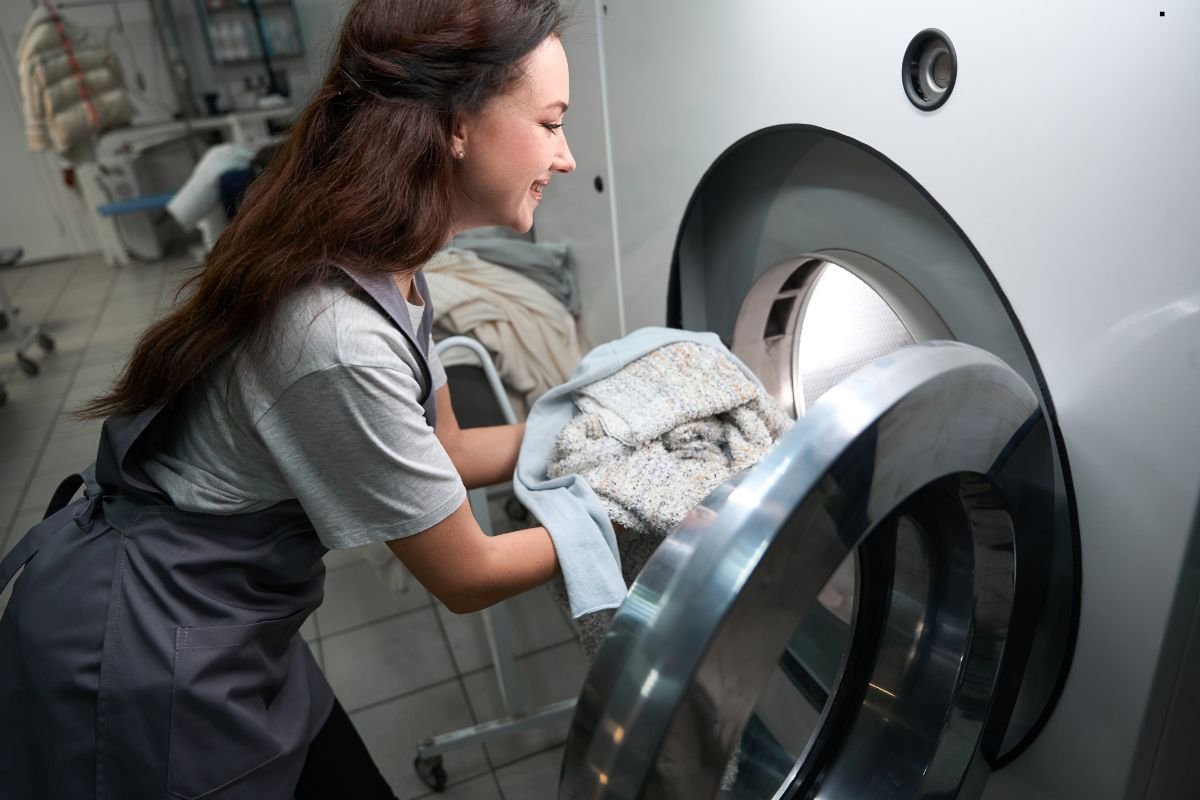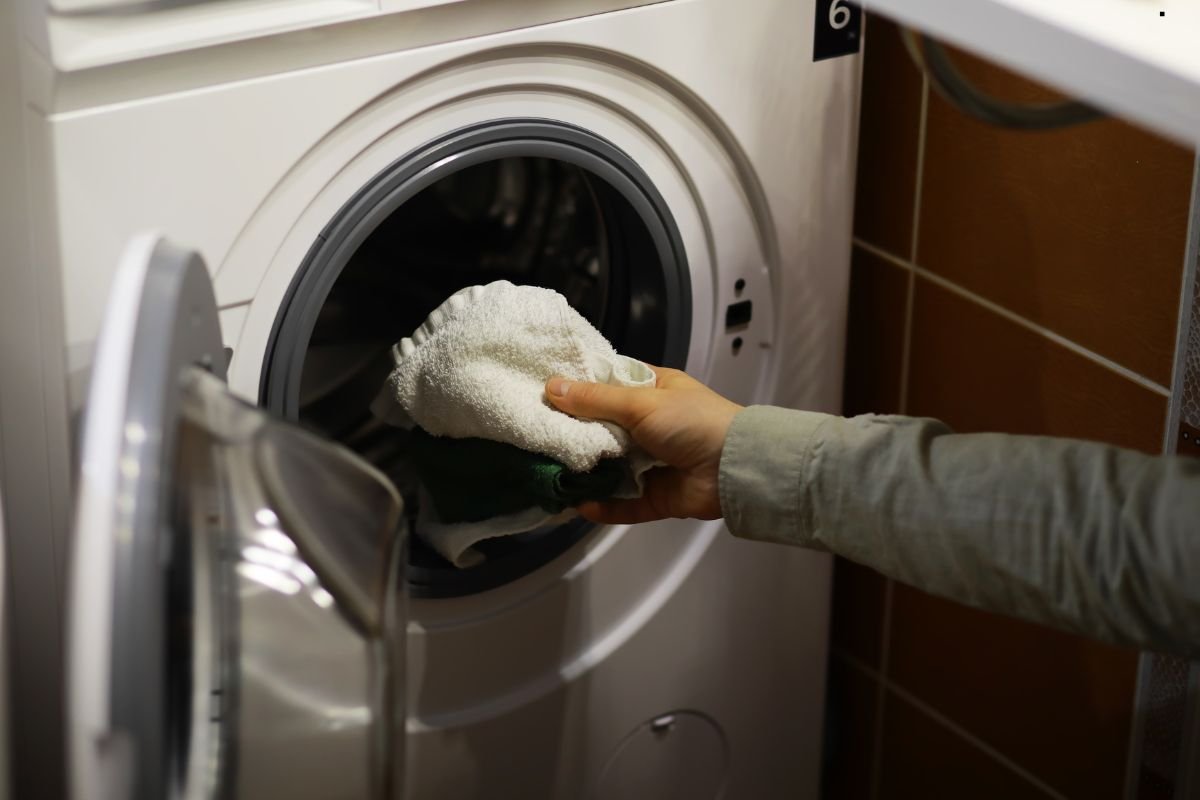
s your Samsung front load washer flashing an error code, leaving you with a pile of wet clothes and a headache? Don’t panic! Most error codes indicate a simple problem you can potentially fix yourself. This guide will walk you through common Samsung washer error codes, explaining what they mean and providing actionable solutions. While many issues can be resolved with DIY troubleshooting, some require professional expertise.
1. Decoding Samsung Washer Error Codes: A Guide for US Homeowners

Modern Samsung front load washers are technological marvels, designed to clean clothes efficiently and effectively. However, like any complex appliance, they can occasionally experience problems. When something goes wrong, the washer typically displays an error code on its digital panel. These codes are essentially diagnostic messages, offering a clue about what’s ailing your machine. Understanding these codes can save you time, money, and the frustration of guessing at the problem.
Knowing the error code will allow you to quickly determine whether it’s something you can easily resolve on your own, like a clogged drain hose, or if you need professional help. For expert advice on tackling other appliance-related challenges, check out our previous blog The Ultimate Guide: How to Wash a Rug in Honolulu Like a Pro
2. Understanding the Basics: How Error Codes Work in Samsung Washers
Samsung washers use a system of letters and numbers to communicate problems. These codes are programmed into the machine’s control board and are triggered when a sensor detects an issue. When an error occurs, the washer will often stop the cycle and display the code until the problem is resolved. You can usually find the error code displayed on the front panel of your machine.
Before diving into specific error codes, it’s crucial to understand that they are just indicators. While a code might point to a specific component, the root cause could be something else entirely. For instance, an “OE” (drain error) code might be caused by a blocked drain pump, a kinked drain hose, or even a problem with the water level sensor. Accurate code identification will significantly reduce your troubleshooting time and costs. For more information, visit our service page
3. Troubleshooting Water and Drainage Issues:
Water Inlet Error (IE/4E): This code usually indicates a problem with the water supply.
- Possible Solutions:
- Check if the water supply valves are fully open.
- Ensure that the water hoses are not kinked or blocked.
- Inspect the water inlet valve filter for debris and clean if necessary.
- Check the water pressure, in USA standard (typically 40-60 psi). Low water pressure can prevent the washer from filling properly.
Drain Error (OE/5E): This indicates a problem with draining the water from the washer.
- Possible Solutions:
-
- Check the drain hose for kinks, clogs, or blockages.
- Inspect the drain pump filter and remove any debris.
- Ensure the drain hose is properly connected to the drainpipe or standpipe.
- Make sure the drainpipe is not clogged.
Leakage Error (LE/LC): This indicates a water leakage somewhere in your washer.
- Possible Solutions:
-
- Inspect water hoses and connection fittings for leaks and cracks.
- Check the door seal or tub seal for signs of damage or wear.
- If overflowing inspect the Water Level Sensor or the Pressure Sensor
- Ensure the drain hose and drain pipe fitting area is properly secured to prevent leaks or clogs. If you’re unsure, call us for assistance!
Water Supply/Fill Issue (E9/9E): Indicates that the water is either filling too slowly or failing to reach the required water levels.
- Possible Solutions:
- Inspect water hoses and ensure that are not twisted
- Look for sufficient water pressure on the water supply.
Water Heating Error(HOT/H20): Indicates the machine is not filling with water or takes longer time to fill.
- Possible Solutions:
- Check if the hot water line is properly connected to the machine.
- Inspect the water temperature sensor
- Inspect the water heater Element
- Look For water inlet valves.
4. Addressing Motor, Sensor, and Heating Problems

Motor Error (3E/3C): Problems with the motor might lead to your machine acting erratically.
- Possible Solutions:
- First Check any obstruction in the drum of the washer.
- Look for Drive Belt wear and tear for the motor spinning smoothly.
- Carbon brush worn-out.
Unbalanced Load (UC/UE): This commonly arises from the weight not being evenly distributed, disrupting the washing cycle.
- Possible Solutions:
-
- Rearranging Clothes more uniformly
- Make sure the washer itself is evenly leveled
Temperature Sensor Error (TE/SE/5E): If water is not heated.
- Possible Solutions:
-
- Inspecting connections
- The replacement of temperature sensor might be a good choice for ensuring your temperatures are accurately monitored
Heater Error (HE1/HE2/HE3): Issues during a heating cycle can be associated with a defective sensor
- Possible Solutions:
-
- Checking Heater component and ensure electrical integrity
- Replacement may be needed for consistent performance during each cycle
5. Electrical and System Malfunctions: What the Codes Mean
Communication Error (AE/A1): There are difficulties establishing communications among elements inside your washing Machine
- Possible Solutions:
- Check connections physically for loose connections
- If there is damaged component, replacement could be the fix
Button/Keypad Issue (BE): Malfunction of the button/ keypad can prevent the complete operation of your device.
- Possible Solutions:
-
- Cleaning the keypad panel with mild, damp material for ensuring unobstructed functionality.
- The connections need review and repair
Motor Overcurrent (CE): Overburdening the machine from a motor is identified by the Code error; a safety mechanism.
- Possible Solutions:
-
- Reduce Load for preventions of too-high-Amperage running through device’s mechanism.
Door Error (DE/DOOR): This signifies issues linked to opening or locking doors thus can lead to interruption for regular washing cycle.
- Possible Solutions:
-
- Clearing potential jams along the door pathway ensures locking system mechanism.
- The door can be required to replace
Power Surge or Noise(1E): Fluctuating Current during Washing cycle from utility supplier.
- Possible Solutions:
-
- Checking Home Circuit Barkers.
- Installing Surge Protector
Sensor Malfunction (8E): Failure or improper work on Sensor mechanism and detection and operation in washing machine.
- Possible Solutions:
-
- Sensors are inspected or Cleaned from Debris to improve.
- Possible sensor issues could be the cause. If you’re experiencing this, call us for expert assistance!
6. When to Call a Professional: DIY vs. Calling a Repair Technician: Making the Right Choice
While some error codes point to simple fixes, others require specialized knowledge and tools. Here’s a guideline to help you decide whether to tackle the repair yourself or call a professional appliance repair technician:
- DIY-Friendly:
-
- Cleaning drain pump filters
- Checking and straightening hoses
- Resetting the washer
- Call a Professional:
- Any error code related to electrical components (motors, control boards)
- Error codes that persist after attempting basic troubleshooting
- Any repair that requires disassembly of major components
Working with electricity or complex home appliance components can be dangerous. If you’re not comfortable performing the repair yourself, or if the problem persists, it’s always best to err on the side of caution and call a qualified technician.
7. Keeping Your Samsung Washer Running Smoothly: Preventative Tips
Clean the Drain Pump Filter Regularly: Remove and clean the drain pump filter every few months to prevent clogs.
- Use the Right Amount of Detergent: Using too much detergent can lead to residue buildup and problems.
- Load the Washer Properly: Avoid overloading the washer.
- Wipe Down the Door Seal: After each wash, wipe down the door seal to prevent mold and mildew growth.
- Run a Cleaning Cycle: Use a washer cleaner regularly (check your owner’s manual for recommendations).
- Check Hoses Regularly: Inspect hoses for wear and tear.
8. Performing a Washer Reset: A Step-by-Step Guide
Consult your washer owner manual for the specific instruction to reset.
Conclusion
Armed with this knowledge, you’re better equipped to understand and troubleshoot common Samsung front load washer error codes. Remember to prioritize safety and when in doubt, consult a qualified appliance repair technician. Contact Us to get a quote!
